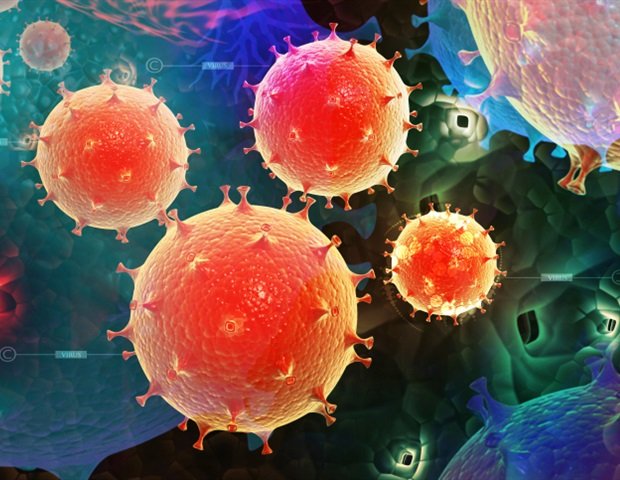A breakthrough for biomedical research promises new insights into immunotherapy development and disease modeling. Scientists at the University of Texas Health Science Center at San Antonio have created a humanized mouse model with a human immune system and human-like gut microbiome capable of generating specific antibody responses.
The scientists were led by Paolo Casali, MD, Ashbel Smith Professor at the University of Texas and Distinguished Research Professor, Department of Microbiology, Immunology and Molecular Genetics at the Joe R. and Teresa Lozano Long School of Medicine. Casali has five decades of biomedical research experience in immunology and microbiology and is a leading researcher in the molecular genetics and epigenetics of the antibody response.
The goal of the multi-year project, which will appear in its August 2024 issue Nature Immunologywas to overcome the limitations of currently available in vivo human models by creating a humanized mouse with a fully developed and functional human immune system.
Mice are widely used in biological and biomedical research because they are small, easy to handle, share many immunological features and biological properties with humans, and are easily genetically modified. Many of the more than 1,600 mouse immune response genes, however, do not agree with their human equivalents, resulting in discrepancies or inadequacies of mice as predictors of human immune responses. This made the availability of a “humanized” mouse model that faithfully replicates human immune responses a high priority.
The first humanized mice were created in the 1980s to model HIV infection and the human immune response to HIV. Humanized mice were, and have since been, created by injecting immunodeficient mice with human peripheral lymphocytes, hematopoietic stem cells, or other human cells. Previous and current models, however, do not develop a fully functional human immune system, are short-lived, and do not generate effective immune responses. This makes them unsuitable for in vivo development of human immunotherapies, modeling of human diseases or development of human vaccines.
Casali’s group began by injecting immunodeficient NSG W41 mutant mice intracardially (left ventricle) with human stem cells purified from umbilical cord blood. After a few weeks, once the graft is established, the mice are hormonally regulated with 17b-estradiol (E2), the most potent and abundant form of estrogen in the body. Hormonal regulation by estrogen was prompted by earlier research by Casali and others suggesting that estrogen enhances the survival of human stem cells, enhances the differentiation of B lymphocytes, and the production of antibodies to viruses and bacteria.
The resulting humanized mice, called TruHuX (for true human, or THX), possess a fully developed and fully functional human immune system, including lymph nodes, germinal centers, human thymic epithelial cells, human T and B cells, memory B cells, and plasma cells that produce highly specific antibodies and autoantibodies identical to those of humans.
THX mice show mature neutralizing antibody responses to Salmonella Typhimurium and SARS-CoV-2 Spike S1 RBD after inoculation with Salmonella flagellin and Pfizer’s COVID-19 mRNA vaccine, respectively. THX mice can also develop full systemic lupus autoimmunity after injection of pristane, an oil that induces an inflammatory response.
Casali said the discovery of mouse THX opens up possibilities for in vivo human experimentation, development of immunotherapeutics such as cancer checkpoint inhibitors, development of human bacterial and viral vaccines, and modeling of many human diseases. He also hopes that the new approach could render obsolete the use of non-human primates for immunological and microbiological biomedical research.
As previous research on the effect of estrogen and the immune system is sparse, Casali hopes this discovery will prompt further research into the topic.
Critically harnessing estrogen activity to support human stem cell and human immune cell differentiation and antibody responses, THX mice provide a platform for human immune system studies, human vaccine development, and therapeutic testing.”
Paolo Casali, MD, University of Texas Ashbel Smith Professor and Distinguished Research Professor, Department of Microbiology, Immunology and Molecular Genetics at the Joe R. and Teresa Lozano Long School of Medicine
With the THX model, the Casali lab is now investigating the in vivo human immune response to SARS-CoV-2 (COVID-19) at the systemic and local levels and in human memory B cells, the dependence on the nuclear receptor RORα for the generation them and the events leading to RORα expression and dysregulation. They are also investigating epigenetic factors and mechanisms that mediate the creation of human plasma cells, the cellular factories that produce antibodies. literally thousands per second -? in bacteria, viruses or cancer cells.
Source:
Journal Reference:
Chupp, DPet al. (2024). A humanized mouse mounting mature class-switching, hypermutant, and neutralizing antibody responses. Nature Immunology. doi.org/10.1038/s41590-024-01880-3.
